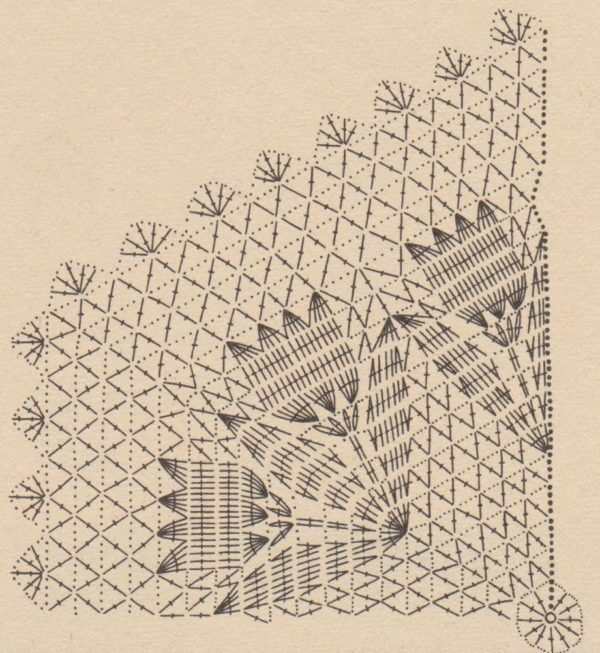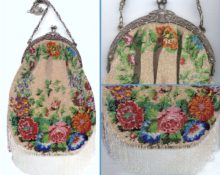Where does knitting begin? From the basics, that is, from a napkin. A hand-knitted napkin is an opportunity to decorate your home to your liking. There is no need to look back at the mass market and buy the same type of products. A hook and thread come to our aid.
General rules for crocheting napkins
Before letting your imagination run wild, let's learn the basics. All diagrams are accompanied by squiggles, which at first glance resemble hieroglyphs. There is definitely no need to be afraid of them. It’s enough to figure it out once, and then things will go on their own.
I will give the most common designations in the form of a picture. A simple cheat sheet once greatly helped a novice needlewoman.
It is recommended to start crocheting napkins with the basics and simple patterns in Russian with descriptions. Then the decor gradually becomes more complex. Love-related tablecloths appear on the tables. The beds are covered with amazing blankets. But today we are talking about basic skills for beginners.
It is this gradual approach that helps you understand the technique, learn to read diagrams and get used to the hook.The first steps of the craftswoman begin with simple drawings. To make the work easier, you can make a printout and mark the steps with a pencil. Then it will be the turn of large oval, rectangular and fancy napkins.
REFERENCE. To make the finished product look even better, it is advisable to starch it. Recipe for medium hardness: 0.5 liters of cold water + 0.5 teaspoon of potato starch. Mix thoroughly, heat, stirring with a spoon, until boiling. Cool to body temperature. Immerse the napkin in the paste for 10 minutes, wring it out and lay it on a horizontal surface until completely dry.
Where to start knitting napkins
Today we will look at simple diagrams with descriptions, and more. First we decide on the threads. Many needlewomen prefer mercerized cotton. Special processing makes the yarn look like silk. It becomes strong and has a pleasant shine.
Openwork classics are well knitted with a thin thread:
- "Snowflake";
- "Rose";
- "Aster";
- "Pelican";
- the incredibly popular "Iris".
Thicker options are great for voluminous patterns:
- "Anna 16";
- "Lily";
- "Lacy pekhorka."
“Iris” produces a huge assortment of all shades of the palette, and “Snowflake” comes only in white. The thinnest to the touch is “Snowflake”, then “Iris” and “Rose”. If you knit the same pattern, the difference in the diameter of the finished product is noticeable. This effect is related to thickness. The thicker the thread, the larger the napkin. The most voluminous of those listed is “Rose”.
REFERENCE. Potholders are knitted from wool and wool mixtures. It is not customary to use them for napkin making.
The selection of a hook is based on the thickness of the threads and personal preferences. No. 2 is most often used.The result should be a moderately dense product without loose sagging posts and loops.
To begin with, take the most popular number. If things go well, the craftswoman stocks up with a set of hooks for the most accurate selection.
Simple napkin patterns for beginners
So, we have everything prepared. Now it remains to decide on the scheme. We denote rapport by *…*, as is customary in the descriptions. For all napkins we will need mercerized cotton and a No. 2 hook.
"Snowflake"

We cast on 8 air loops (VP), close the circle with a connecting loop (SP).
1st row: 5 ch, *1 double crochet (dc), 2 ch*, sp in the third stitch (in the pattern, the connecting stitch will always be tied into the third chain stitch, otherwise the rows will go astray).
2nd row: starting from it, each time we first make 3 VP lifting, then follow the pattern, 2 more VP, * 3 VP, 3 SN in 1 SN of the previous row (prev. row) *, SP.
3rd: 2 dc in the previous column. r., *4 VP, 5 CH (2 CH in the extreme CH and 1 CH in the middle)*, SP.
4th: 6 dc (2 dc in each dc in the outer dc of the front row and 1 dc in the middle), * 4 ch, 7 dc (we work as in the third row - adding 1 dc in each free dc middle)*, SP.
5th: 8 dc (same as row 4), * 5 ch, 9 dc (same as row 4) *, sp.
6th: 10 dc, *6 ch, 11 dc*, sp in the third ch and make another sp.
7th: 8 CH (leave one column of the previous row free), * 8 VP, 9 CH * (keep one column free on both sides), as a result, a rhombus should be formed, SP in the third VP + 1 SP.
8th: 6 dc, *13 ch, 7 dc*, sp in third ch + 1 sp.
9th: 4 dc, *6 ch, (1 sc, 6 ch, 1 sc) – in the middle of the arch, 6 ch, 5 dc*, sp in the third ch + 1 sp.
10th: 2 CH, *6 VP, in the arch 6 CH, 6 VP, 3 CH*, SP in the third VP + 1 SP.
11th: 1 dc, [7 ch, in each of the four middle scs before. R. we knit - *2 dc each with a common vertex (A), connecting them 3 ch* 4 times, 7 ch, 2 dc], sp into the third ch.
12th: don’t forget about the rise, do 4 VP, picot, [3 VP, into arches from VP before. R. do *2 dc with A, 2 ch, picot, 2 ch, 2 dc with A* 3 times, 3 ch, picot, 4 ch, 1 dc], sp in the third ch.
In the description of the last rows in [...] a large rapport is taken, and in *...* - a small one located inside it.
ATTENTION! The picot is knitted like this: 4 ch and 1 sc in the first ch. This is a popular way to decorate a harness, so we remember and use it.
"Pineapples"
The motif is so popular that it needs to be studied immediately. It is used to create openwork on dresses, skirts and blouses. It is used to make balloon shawls and scarves. The scheme is complicated only at first glance.
IMPORTANT! Each row begins with three chain stitches and ends with a connecting stitch.
We start with six air loops connected into a ring with a connecting post. Then we knit three chain stitches for lifting and 19 double crochets.
The base is ready, let's go through the rows. For convenience, they are numbered. It is better to knit stitches into an arch in the middle, not in a loop. This way you won't get any extra holes.

Sirloin knitting
Another beautiful technique is fillet knitting. It is suitable for both experienced and beginner craftswomen. Most of all, such schemes resemble a coloring book, where you need to color the necessary cells. The result is an openwork product that resembles expensive lace.
Let's look at the finished work with diagrams below. As you can see, you can choose the most unusual shape options!


The oval pattern is very popular in this technique. It is also convenient to embody unusual shapes, for example, hearts.



Interesting ideas for the needlewoman
Having studied the basics, you can take on more complex motives. Square shapes look very nice.


Round and fantasy motifs are more popular. They give room for imagination. The next example turns out to be quite large. Separate guidelines have been issued for borders.



A large napkin takes a little longer. If you want something quick, consider how beautiful cup coasters are crocheted.


Next come interesting options with simple patterns on a fantasy and floral theme.








The following example uses the Pineapple pattern.
This napkin knits very quickly. If you don’t overdo it with ironing, you get a voluminous texture.

There are also elongated options. They are often used to decorate the border.
If you are tired of single-color options, then you can experiment with different threads. Here are some examples for inspiration.
To all craftswomen of straight buttonholes!


















 0
0





